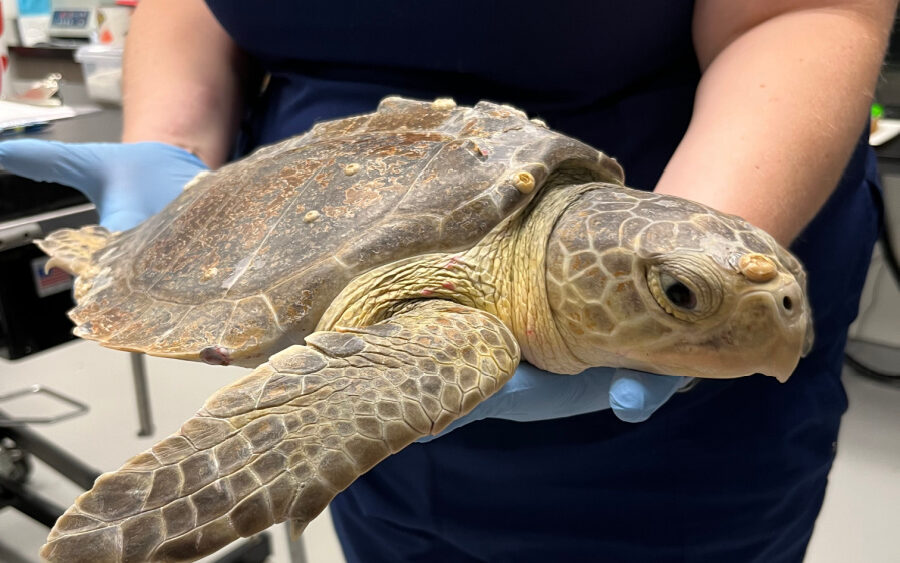Kemp’s Ridley (Lepidochelys kempii)
Stranding Location: Garden City, SC
Arrival Date: 6/14/22
Age: Juvenile
Weight: 3.1kg (6.2 lbs)
Case History
Monoceros was caught on hook and line off of Garden City Pier. When South Carolina Department of Natural Resources (SCDNR) received the call about a hooked turtle, they were told the line was cut short and that the hook could not be seen in the mouth. SCDNR volunteer transporter, Terry Graham, was dispatched to transport this little Kemp’s halfway down to Charleston, where she was met by SCDNR technician, Meredith Bean, who brought them the rest of the way.
Treatment
Upon arrival to the South Carolina Aquarium, Monoceros was active but appeared thin with some minor abrasions to their shell. In an unexpected turn of events, when vet staff took an x-ray to locate the hook, they could not find a hook! We even took another x-ray view for good measure to make sure we were not missing it. With hook removal no longer needed, vet staff then went on to do a physical exam and pull blood. Monoceros had a barnacle attached to the tip of their beak, reminding us of a unicorn. We decided that the constellation Monoceros, meaning unicorn in Greek, was a perfect name for this turtle! Their bloodwork was decent, but we wanted to give them a few weeks to put on some weight and get them back to full health before releasing them. We gave them subcutaneous fluids and vitamins to help rehydrate them. After the triage process was completed, Monoceros was placed in a tank in our sea turtle hospital.
Update
June 26, 2022: Monoceros has settled in well since admit. Initially, it took a few days for them to start eating, but they are now eating well. In a few weeks, we will re-evaluate their body condition and bloodwork for release.
July 15, 2022: Monoceros has been looking good these past few weeks. They have been cleared to get enrichment! Nowadays, they are almost always resting under their backscratcher. We started sunning treatments twice a week where they are exposed to UV. This is to help with some discoloration on their shell — it already looks better with just a few treatments. We have also increased their diet so that they can gain some more weight before they are evaluated for release!


